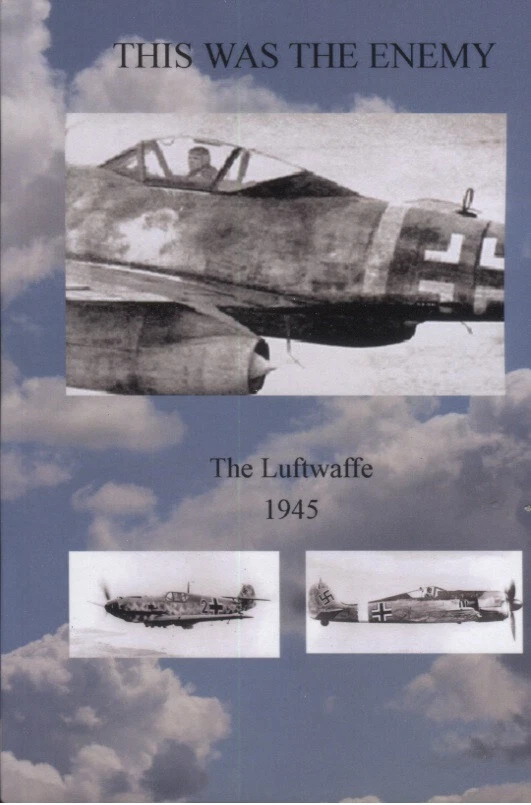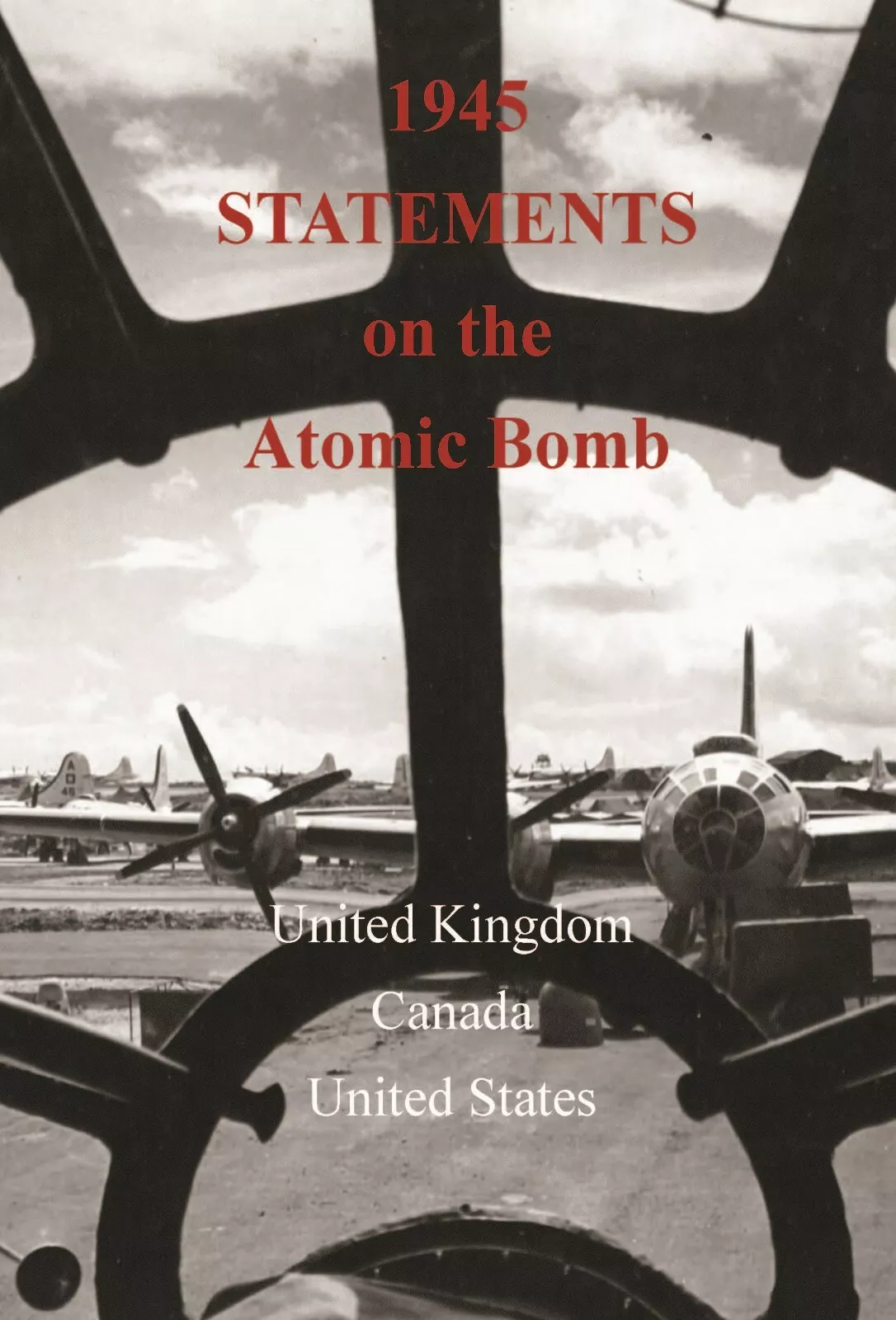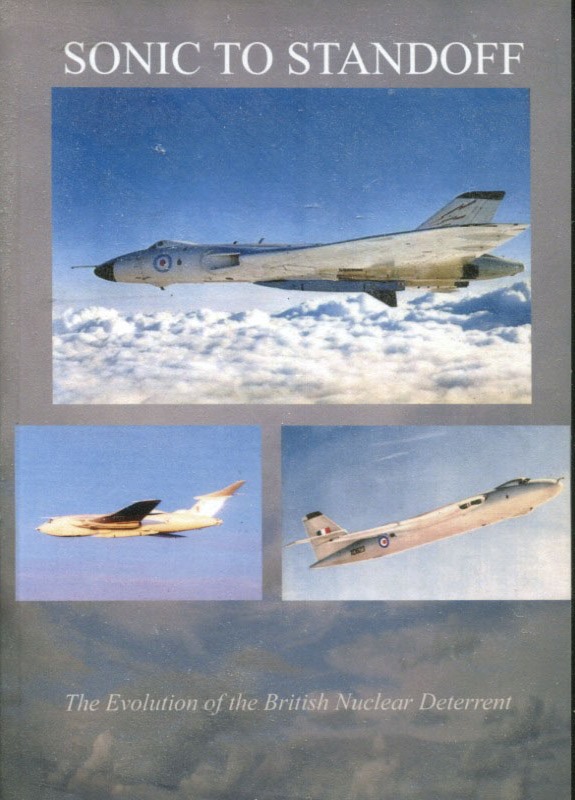British Nuclear Deterrent: The V-Force and Cold War Strategy - Expert analysis by Charles E. MacKay
Introduction: The V-Force and Cold War Strategy
Britain's V-Force represented one of the Cold War's most sophisticated nuclear deterrent systems - a trinity of advanced jet bombers designed to maintain Britain's position as a nuclear power and guarantee the nation's security through strategic deterrence. The Vickers Valiant, Avro Vulcan, and Handley Page Victor formed the backbone of British nuclear strategy from the 1950s through the 1980s. Based on comprehensive research documented in Charles E. MacKay's authoritative work Sonic to Standoff: The Evolution of the British Nuclear Deterrent, this analysis presents the complete story of how Britain developed and maintained its independent nuclear deterrent capability.
The book Sonic to Standoff chronicles part of the development of the British Nuclear Defence Programme, tracing the evolution of the British Blue Steel standoff nuclear bomb. Included are the test phases in Australia and the work of Lord Penney. It covers the work of Tube Alloys and brings to light more information on the special relationship between the United Kingdom and the United States. This comprehensive 224-page work provides detailed coverage of British nuclear deterrent development, including the V-Force bombers and their weapons systems.
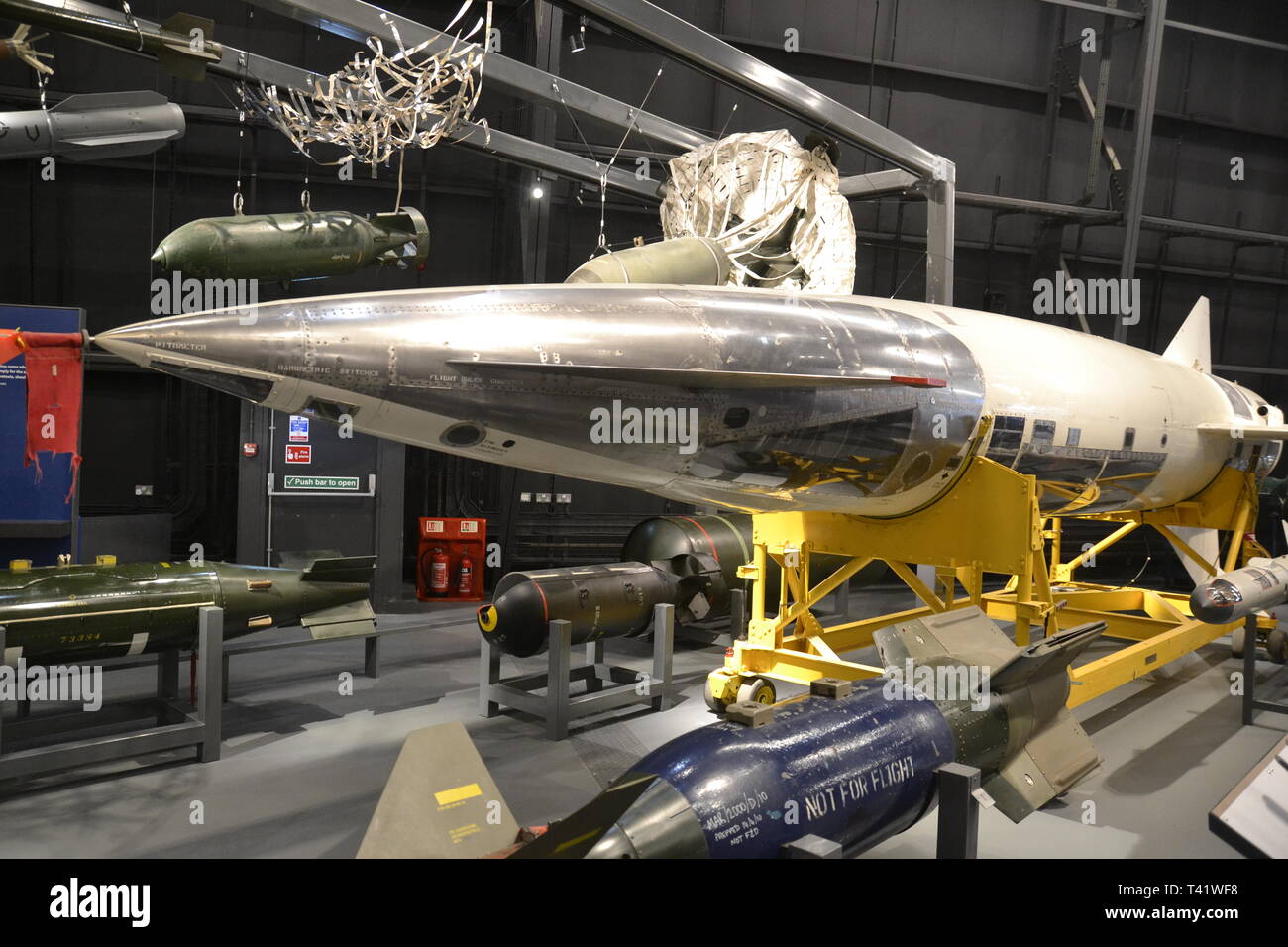
Developed during the height of Cold War tensions, these aircraft embodied cutting-edge aerodynamics, advanced nuclear delivery systems, and sophisticated electronic countermeasures. Their design reflected Britain's determination to maintain independent nuclear capability while operating within NATO's strategic framework.
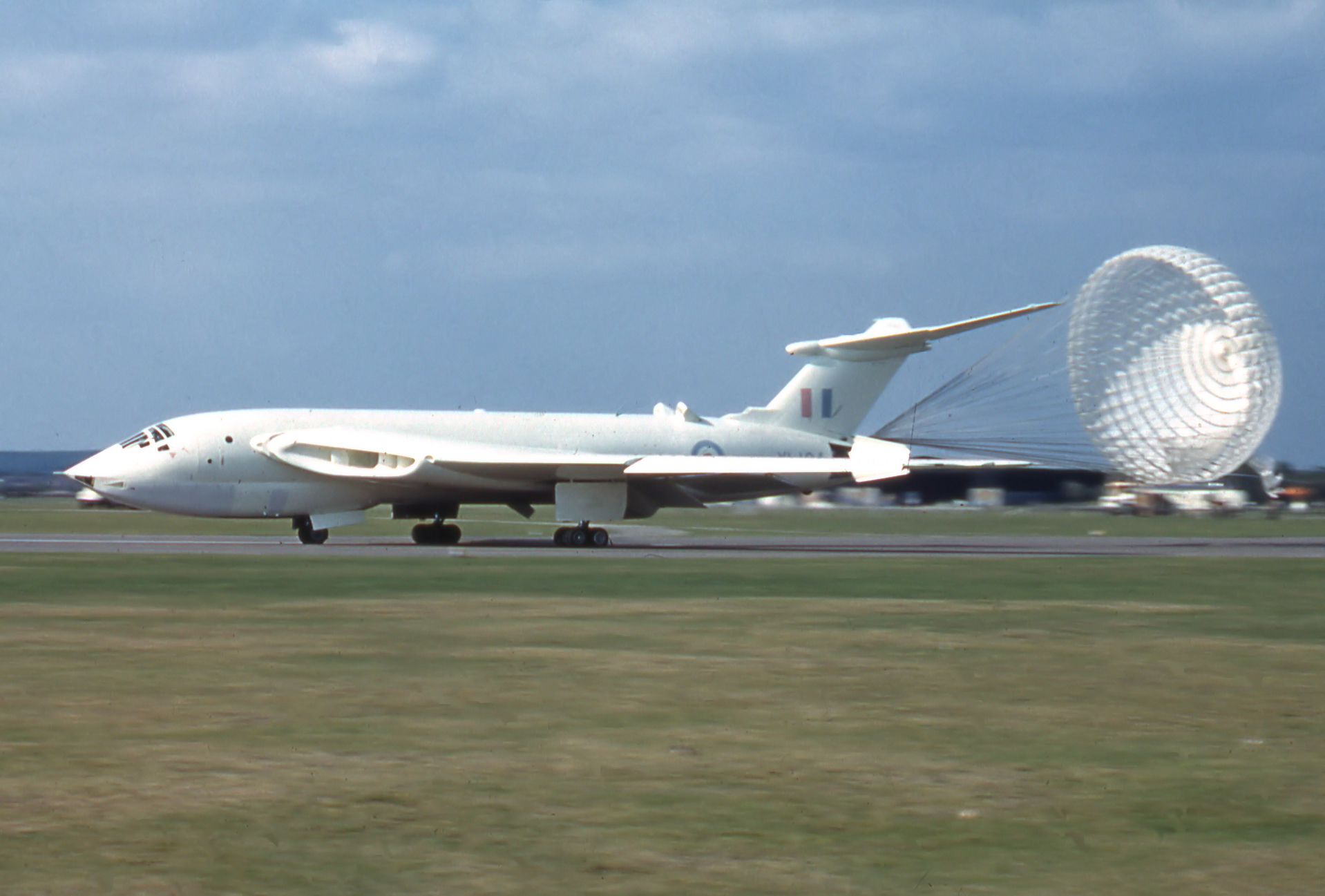
The V-Force story encompasses more than aircraft development - it represents Britain's Cold War strategy, nuclear doctrine evolution, and the technological challenges of maintaining credible deterrence in an era of rapidly advancing missile technology. From Blue Steel standoff weapons to low-level penetration tactics, the V-Force adapted continuously to changing strategic requirements.
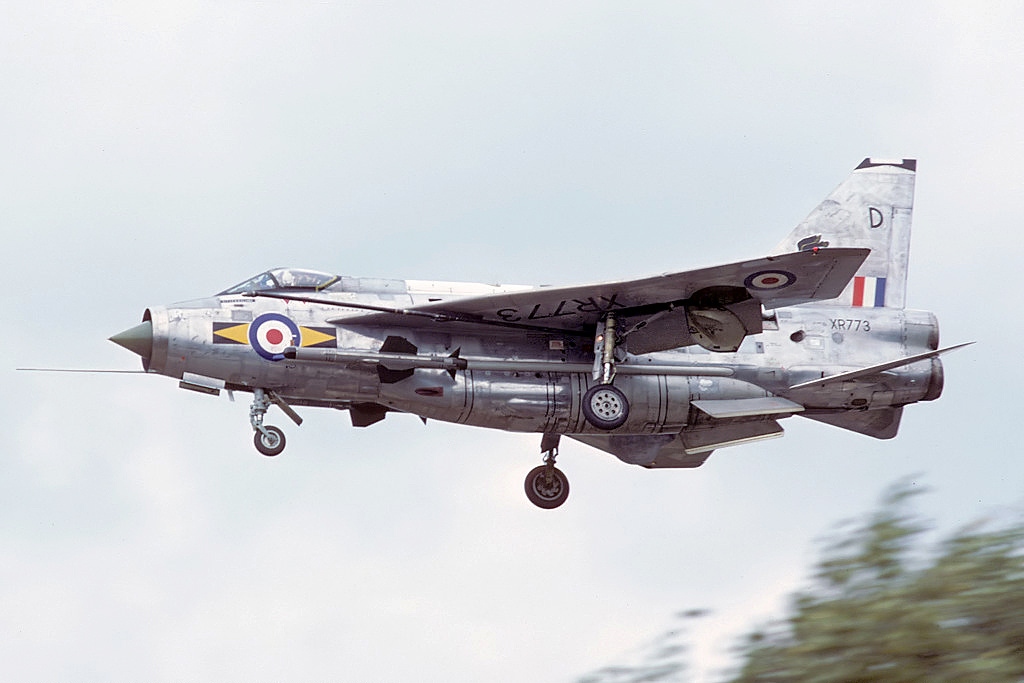
Tube Alloys and British Nuclear Development
The book covers the work of Tube Alloys and brings to light more information on the special relationship between the United Kingdom and the United States. Tube Alloys was Britain's wartime nuclear weapons program, which later integrated with the American Manhattan Project. The comprehensive documentation of Tube Alloys ensures that Britain's contribution to nuclear weapons development is properly recognized and preserved.
The book brings in the Quebec Agreement and the acquisition of Skybolt with Hound Dog and Rascal on the B-52. Rascal is covered in some detail. Describes the "Special Relationship," between the United Kingdom and the USA. This comprehensive coverage demonstrates how British nuclear deterrent development occurred within the context of Anglo-American cooperation, with technology transfer and strategic cooperation influencing British nuclear weapons development.
The Quebec Agreement established the framework for Anglo-American nuclear cooperation, ensuring that British nuclear development could benefit from American technical assistance while maintaining British strategic independence. The comprehensive documentation of this agreement ensures that the complete context of British nuclear deterrent development is properly understood.
The Atom Bomb Lancaster and Early Nuclear Delivery
The book describes the V Bombers, Victor Vulcan and Valiant, and includes details of the Atom bomb Lancaster. This comprehensive coverage demonstrates how Britain's nuclear delivery capability evolved from modified Lancaster bombers to specialized V-Force aircraft. The Atom bomb Lancaster represented Britain's first nuclear delivery capability, demonstrating the feasibility of nuclear weapon delivery by aircraft.
The importance of the Canberra and the atomic bomb development explained and not neglected. Brings in the Washington B1 and the Short Sperrin. This comprehensive coverage demonstrates how various aircraft types contributed to Britain's nuclear delivery capability, with the Canberra serving as a test platform and the Washington B1 and Short Sperrin representing alternative approaches to strategic bombing.
The Canberra's role in atomic bomb development demonstrates how medium bombers contributed to nuclear weapons testing and development. The comprehensive documentation of Canberra's role ensures that this aspect of British nuclear development is properly recognized. Understanding Canberra's contribution provides valuable insights into how Britain developed nuclear delivery capabilities.
The Short Sperrin represented an alternative approach to strategic bomber design, demonstrating how British manufacturers explored different solutions to the nuclear delivery requirement. The comprehensive documentation of Sperrin ensures that the complete story of British strategic bomber development is properly preserved. This coverage demonstrates how competitive development approaches influenced British nuclear deterrent capabilities.
Technical Analysis: Three Distinct Approaches
The V-Force comprised three radically different aircraft designs, each representing different engineering philosophies and operational concepts. This diversity provided operational flexibility and ensured that technological failures in one design would not compromise the entire deterrent force.
The Three V-Force Aircraft
- Vickers Valiant: Conservative design with straight wings, first to enter service in 1955
- Avro Vulcan: Revolutionary delta-wing design, optimized for high-altitude performance
- Handley Page Victor: Crescent wing design, combining high-speed and high-altitude capabilities
The Vickers Valiant: The Foundation
The Vickers Valiant was the most conservative of the three designs, featuring a conventional straight-wing configuration that prioritized reliability and ease of production. Powered by four Rolls-Royce Avon turbojet engines, the Valiant could carry a 10,000-pound nuclear weapon over a range of 4,500 miles.
Entering service in 1955, the Valiant was the first British aircraft to drop a nuclear weapon during testing. Its conventional design made it easier to maintain and operate, but its straight wings limited its performance at high speeds and altitudes. The Valiant would serve as the foundation of the V-Force until its retirement in 1965.
The Avro Vulcan: The Delta Revolution
The Avro Vulcan represented the most radical departure from conventional aircraft design. Its distinctive delta wing configuration was optimized for high-altitude, high-speed performance. The delta wing provided excellent lift characteristics and allowed the aircraft to operate at altitudes above 50,000 feet.
Powered by four Bristol Olympus turbojet engines, the Vulcan could carry a 21,000-pound payload over a range of 3,000 miles. Its delta wing design made it highly maneuverable despite its size, and its large wing area provided excellent low-speed handling characteristics. The Vulcan would become the most recognizable symbol of the V-Force.
The Handley Page Victor: The Crescent Wing
The Handley Page Victor featured the most complex wing design of the three aircraft. Its crescent wing combined a swept leading edge with a straight trailing edge, providing optimal performance across a wide range of speeds and altitudes. This design allowed the Victor to operate efficiently at both high and low altitudes.
Powered by four Armstrong Siddeley Sapphire turbojet engines, the Victor could carry a 35,000-pound payload over a range of 4,000 miles. Its sophisticated wing design and advanced systems made it the most complex of the three aircraft to maintain, but also provided the best overall performance characteristics.
Operational History: From High-Altitude to Low-Level
The V-Force's operational history reflects the changing nature of strategic warfare during the Cold War. Initially designed for high-altitude bombing missions, the aircraft were forced to adapt to new threats and operational requirements as Soviet air defenses improved.
During the 1950s and early 1960s, the V-Force operated primarily at high altitudes, relying on speed and altitude to penetrate enemy airspace. The aircraft would fly at altitudes above 50,000 feet, where they were relatively safe from most air defenses. This high-altitude strategy was effective against early Soviet air defense systems.
The introduction of Soviet surface-to-air missiles in the late 1950s forced a fundamental change in V-Force tactics. High-altitude operations became increasingly dangerous as Soviet SAM systems improved. The V-Force was forced to develop low-level penetration tactics, flying at altitudes below 500 feet to avoid detection and interception.
This transition to low-level operations required significant modifications to the aircraft and extensive retraining of aircrews. The aircraft were fitted with terrain-following radar and other systems to enable safe low-level flight. The change in tactics also required new training procedures and operational concepts.
Blue Steel Standoff Missile: The Standoff Revolution
The book traces the evolution of the British Blue Steel standoff nuclear bomb. Included are the test phases in Australia and the work of Lord Penney. The book gives details of the development of British free-fall nuclear devices (WE177), Blue Steel, Polaris and Thor - not found in recent publications. This comprehensive coverage ensures that Blue Steel's development and operational deployment are properly documented and preserved.
The development of the Blue Steel missile was a significant technical achievement, requiring advances in guidance systems, propulsion, and nuclear weapon miniaturization. The missile used inertial guidance and could be programmed to follow complex flight paths to avoid enemy defenses. Blue Steel allowed V-Force aircraft to attack targets from safe distances beyond enemy air defenses, fundamentally changing British nuclear strategy.
The book follows the development of the HWK rocket motor and its use in British airframes culminating in Blue Steel. Shows how the system was based on German technology, commences with the giant Paris Gun and then starts from Germany in 1919 with gliding and the German flying school in Russia, the inventors Lippisch, von Braun and Dornberger and the HWK rocket, the Me163 and its rocket motor in the Vickers Trans-Sonic missile of 1947. This comprehensive coverage demonstrates how German rocket technology influenced British nuclear standoff weapon development.
The HWK rocket motor development, originally used in the Me163 rocket fighter, provided the propulsion system for Blue Steel. The comprehensive documentation of this technology transfer ensures that the complete story of Blue Steel development is properly understood. Understanding how German rocket technology influenced British nuclear weapons demonstrates the international nature of weapons development during the Cold War.
The test phases in Australia and the work of Lord Penney demonstrate how British nuclear testing supported Blue Steel development. William George Penney's work on Operation Hurricane and the British Hydrogen bomb ensured that British nuclear weapons were suitable for Blue Steel delivery. The comprehensive documentation of nuclear testing ensures that the complete story of Blue Steel development is properly preserved.
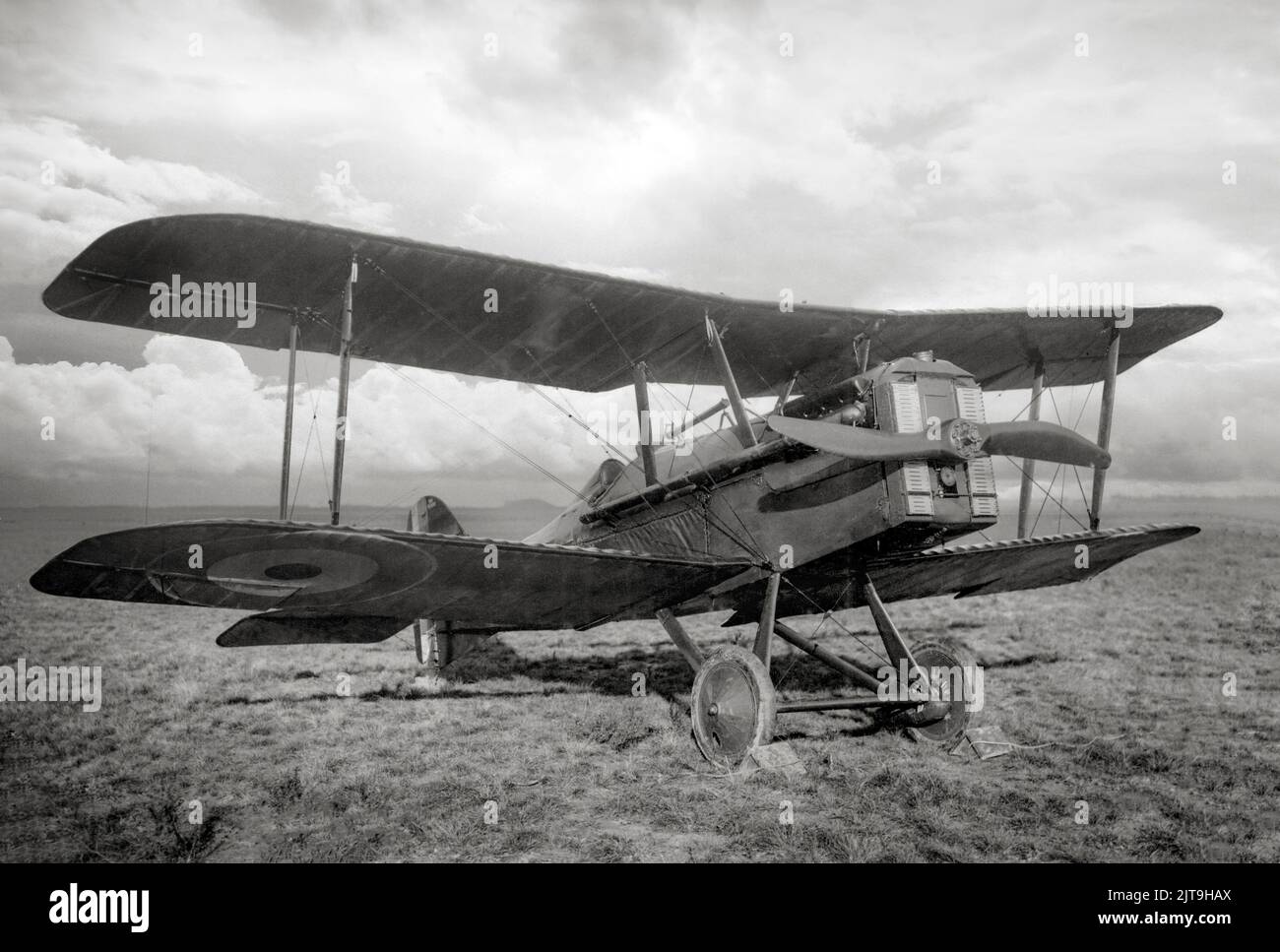
WE177 Nuclear Devices and British Free-Fall Weapons
The book gives details of the development of British free-fall nuclear devices (WE177), Blue Steel, Polaris and Thor - not found in recent publications. Never before published photographs of the British Superfortress on Blue Jay and Red Dean and WE177 trials. This comprehensive coverage ensures that WE177 development and operational deployment are properly documented and preserved.
WE177 represented Britain's tactical nuclear weapon, designed for delivery by various aircraft types including V-Force bombers. The comprehensive documentation of WE177 development ensures that the complete story of British nuclear weapons development is properly preserved. Understanding WE177 provides valuable insights into how Britain developed nuclear weapons for different operational requirements.
The British Superfortress trials with Blue Jay and Red Dean demonstrate how British aircraft tested various missile systems for nuclear delivery. The comprehensive documentation of these trials ensures that the complete story of British nuclear weapons testing is properly preserved. Understanding these trials provides valuable insights into how Britain developed nuclear delivery capabilities.
German Rocket Technology and British Nuclear Development
The book shows how the system was based on German technology, commences with the giant Paris Gun and then starts from Germany in 1919 with gliding and the German flying school in Russia, the inventors Lippisch, von Braun and Dornberger and the HWK rocket, the Me163 and its rocket motor in the Vickers Trans-Sonic missile of 1947. This comprehensive coverage demonstrates how German rocket technology influenced British nuclear standoff weapon development.
Has the evolution of the German rocket includes the Walther rocket in the ME163 and German missile development. The details were incorporated into the British nuclear standoff bomb. Commencing at Versailles 1919, then the Germans in Russia at the Lipetsk flying school and at Fili aircraft assembly plant, with Hugo Junkers and Ernst Heinkel. There is clear explanation of German rocket development with details of Enzian and Schmetterling at Rechlin and Peenemunde. All the inventors are mentioned including the Nazi, von Braun and Willy Ley. Explains the importance of Hitler's visit to Rechlin with Goering. Included are charts of German and Russian developments never before published.
The comprehensive documentation of German rocket development ensures that the complete story of how German technology influenced British nuclear weapons is properly preserved. Understanding this technology transfer provides valuable insights into how British nuclear deterrent development benefited from German wartime achievements. The documentation of German rocket development demonstrates the international nature of weapons development during the Cold War.
Miles M52 and Early British Missile Development
There is the RAE use of the Mosquito to drop the first test missiles. Investigates all the UK early missile testing with the Miles M52 and the Power Jets W2/700 at Aberporth and Woomera. There is also description of the M52 designed with the V1 rocket engine and the Gillette Falcon. The M.52 design was seen by the americans and influenced the Bell X1. This comprehensive coverage demonstrates how early British missile testing contributed to nuclear weapons development.
The Miles M52 represented Britain's attempt to develop supersonic aircraft technology, with design elements that influenced American development. The comprehensive documentation of M52 development ensures that Britain's contribution to supersonic flight is properly recognized. Understanding M52 development provides valuable insights into how British aeronautical research influenced international aviation development.
The RAE use of the Mosquito to drop the first test missiles demonstrates how British test aircraft contributed to missile development. The comprehensive documentation of these tests ensures that the complete story of British missile development is properly preserved. Understanding these early tests provides valuable insights into how Britain developed missile technology for nuclear delivery.
Silverplate B-29 and British Nuclear Testing
Has a listing of all Silverplate/Chickenpox B-29s and the American use of the Maud Report. Introduces the Royal Air Force and the Victor, Vulcan, Valiant, Sperrin, Canberra and Washington bombers and the Silverplate B-29. This comprehensive coverage demonstrates how British nuclear development benefited from American technical assistance and how British aircraft contributed to nuclear testing.
Silverplate B-29s were modified American bombers used for nuclear weapons testing and delivery. The comprehensive documentation of these aircraft ensures that their role in British nuclear development is properly recognized. Understanding Silverplate B-29s provides valuable insights into how Britain developed nuclear delivery capabilities with American assistance.
The American use of the Maud Report demonstrates how British nuclear research influenced American nuclear weapons development. The comprehensive documentation of the Maud Report ensures that Britain's contribution to nuclear weapons development is properly recognized. Understanding the Maud Report provides valuable insights into how British nuclear research influenced international nuclear development.
Polaris and Thor: Missile Systems
The book gives details of the development of British free-fall nuclear devices (WE177), Blue Steel, Polaris and Thor - not found in recent publications. This comprehensive coverage ensures that Polaris and Thor development and operational deployment are properly documented and preserved.
Polaris represented Britain's submarine-launched ballistic missile system, providing a more survivable nuclear deterrent than aircraft. The comprehensive documentation of Polaris development ensures that the complete story of British nuclear deterrent evolution is properly preserved. Understanding Polaris provides valuable insights into how Britain adapted its nuclear deterrent strategy to changing threats.
Thor represented Britain's intermediate-range ballistic missile system, providing an additional nuclear delivery capability. The comprehensive documentation of Thor ensures that the complete story of British nuclear weapons development is properly preserved. Understanding Thor provides valuable insights into how Britain developed multiple nuclear delivery systems.
The book ends on the banks of the River Clyde at Faslane, Scotland, where Polaris submarines were based. This comprehensive coverage demonstrates how Britain's nuclear deterrent evolved from aircraft to submarines, with Faslane becoming the home of Britain's submarine nuclear deterrent. The comprehensive documentation of Faslane ensures that the complete story of British nuclear deterrent basing is properly preserved.
RAF Order of Battle 1970
There are two tables of organisation describing the Order of Battle of the Royal Air Force in 1970 at the height of the Cold War. This comprehensive documentation ensures that the complete structure of Britain's nuclear deterrent force is properly preserved. Understanding the RAF Order of Battle provides valuable insights into how Britain organized its nuclear deterrent capability during the Cold War.
The Order of Battle tables demonstrate how V-Force squadrons were organized and deployed, providing insights into British nuclear deterrent operations. The comprehensive documentation of these tables ensures that the complete structure of Britain's nuclear deterrent is properly preserved. Understanding the Order of Battle provides valuable insights into how Britain maintained its nuclear deterrent capability.
William George Penney and Nuclear Testing
British Nuclear testing and the work of William George Penney in Operation Hurricane and the British Hydrogen bomb are included. Included are the test phases in Australia and the work of Lord Penney. This comprehensive coverage ensures that Penney's crucial contribution to British nuclear weapons development is properly recognized and preserved.
William George Penney was responsible for Britain's nuclear weapons development, including Operation Hurricane and the British Hydrogen bomb. The comprehensive documentation of Penney's work ensures that Britain's nuclear weapons development achievements are properly recognized. Understanding Penney's contribution provides valuable insights into how Britain developed nuclear weapons independently.
Operation Hurricane represented Britain's first nuclear test, demonstrating that Britain had successfully developed nuclear weapons. The comprehensive documentation of Operation Hurricane ensures that Britain's nuclear weapons development achievements are properly preserved. Understanding Operation Hurricane provides valuable insights into how Britain established its nuclear capability.
The British Hydrogen bomb development represented Britain's achievement of thermonuclear capability, ensuring that Britain remained a credible nuclear power. The comprehensive documentation of hydrogen bomb development ensures that Britain's nuclear weapons achievements are properly recognized. Understanding hydrogen bomb development provides valuable insights into how Britain maintained its nuclear deterrent capability.
Conclusion: The V-Force's Strategic Significance
The V-Force represents one of the most significant achievements in British aviation history. The development of three distinct aircraft types, each optimized for different aspects of the strategic bombing mission, demonstrated Britain's engineering capabilities and strategic thinking during the Cold War. The comprehensive documentation provided in Charles E. MacKay's Sonic to Standoff: The Evolution of the British Nuclear Deterrent ensures that this remarkable story is preserved for future generations.
The operational flexibility provided by having three different aircraft types allowed the V-Force to adapt to changing threats and operational requirements. This flexibility was crucial to maintaining the credibility of Britain's nuclear deterrent throughout the Cold War. The comprehensive documentation of V-Force operations ensures that the complete story of British nuclear deterrent operations is properly preserved.
The technical innovations developed for the V-Force aircraft influenced subsequent generations of aircraft design. The delta wing concept, advanced propulsion systems, and sophisticated avionics developed for these aircraft have been applied to numerous subsequent military and civilian aircraft. The comprehensive documentation of these innovations ensures that their contribution to aviation development is properly recognized.
Most importantly, the V-Force successfully maintained Britain's nuclear deterrent capability for over three decades. During this period, the aircraft served as a visible symbol of Britain's commitment to its own defense and its role within the NATO alliance. The V-Force ensured that Britain remained a credible nuclear power, capable of independent action when necessary.
The evolution from Blue Steel standoff missiles to Polaris submarines demonstrates how Britain adapted its nuclear deterrent strategy to changing threats. The comprehensive documentation of this evolution ensures that the complete story of British nuclear deterrent development is properly preserved. Understanding this evolution provides valuable insights into how Britain maintained its nuclear deterrent capability throughout the Cold War.
Academic Recognition and Research Value
The book is described as "A valuable addition to our literature on the RAF and the Cold War," Librarian and "A scholarly document," reviewer. The book describes the evolution of the British Nuclear Deterrent in original research. This rigorous approach to research ensures factual accuracy and comprehensive coverage. The comprehensive documentation of British nuclear deterrent development creates a valuable resource for researchers studying nuclear strategy, British defence policy, and Cold War aviation.
The book's value extends beyond individual aircraft types to provide insights into nuclear strategy, technology transfer, and international cooperation. The comprehensive coverage of Tube Alloys, the Quebec Agreement, Blue Steel development, and Polaris deployment creates a valuable resource for understanding British nuclear deterrent development. The detailed documentation of technical development and operational deployment ensures that the complete story of British nuclear deterrent is properly preserved.
The book's comprehensive coverage of German rocket technology, British nuclear testing, and missile development ensures that all aspects of British nuclear deterrent development are properly documented. The detailed documentation of technical continuities and operational achievements ensures that the complete story of British nuclear deterrent development is properly preserved. This comprehensive documentation demonstrates the value of original research in preserving aviation and military history.
Further Reading and Related Works
For comprehensive coverage of British nuclear deterrent development and related topics, explore these authoritative works by Charles E. MacKay:
- Sonic to Standoff: The Evolution of the British Nuclear Deterrent — The definitive 224-page work chronicling part of the development of the British Nuclear Defence Programme, tracing the evolution of the British Blue Steel standoff nuclear bomb, including test phases in Australia and the work of Lord Penney, covering Tube Alloys, the special relationship between the United Kingdom and the United States, German rocket technology, V-Force bombers, Blue Steel, WE177, Polaris, Thor, RAF Order of Battle 1970, and nuclear testing
- Birth of the Atomic Bomb: Statements from Churchill, Truman, Pash etc. German Alsos — Comprehensive coverage of atomic bomb development and deployment
- Avro Vulcan: Aerodynamics, Systems, and Britain's Cold War Deterrent — Detailed analysis of the Vulcan bomber's design and operations
- Jet Age Aviation: Cold War Development — Coverage of Cold War aviation development
Related Articles
- Avro Vulcan: Aerodynamics, Systems, and Britain's Cold War Deterrent — Detailed analysis of the Vulcan bomber
- Jet Age Aviation: Cold War Development — The broader context of Cold War aviation
References
- Royal Air Force Museum — Aircraft Collection — Royal Air Force Museum
- Imperial War Museums — Aviation History Articles — Imperial War Museums
- FlightGlobal Archive — FlightGlobal

